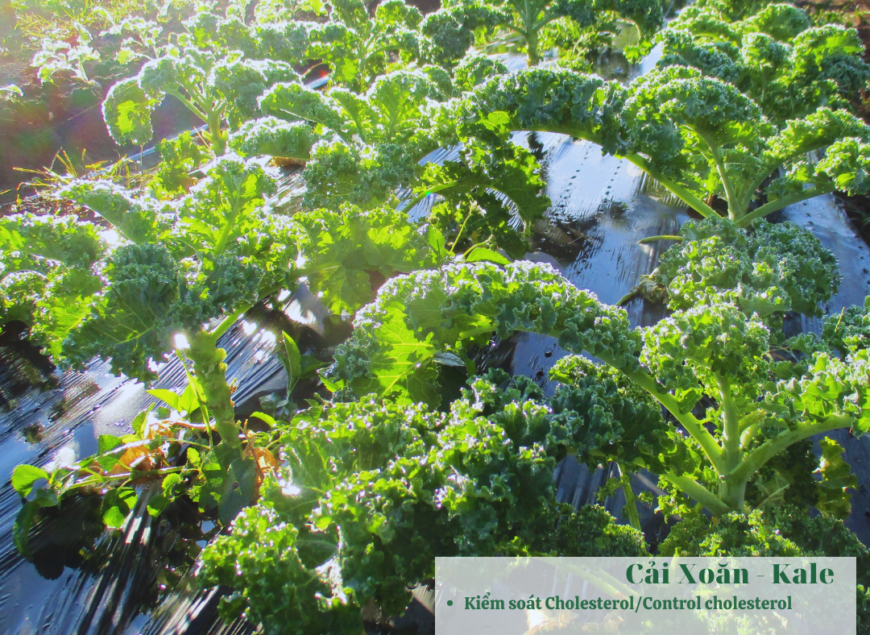🌿One of the special vegetables that Biophap wants to introduce to the whole family this week is Kale, also known in Vietnamese as Kale – a typical vegetable that is only grown in places with cool weather like in Phu Hoa farm, Chu Pah district, Gia Lai province and Mang Canh farm, Kon Plong district, Kon Tum province. Biophap’s variety of kale is long-leaf kale, dark green, rich in chlorophyll and folate.
🌿In the past 3-4 years, kale has become a “trend” in the dishes and juices of all cafes, restaurants and appears more often in the meals of every family. So what is the effect of kale that is so “sought after”?
🌿Kale has grown in popularity in recent years due to its nutritional value – rich in beta carotene, vitamins C, K and folate, and a rich source of chlorophyll, calcium and iron in the easily absorbed type. The antioxidants and Omega 3 fatty acids in kale provide powerful anti-inflammatory properties.
🌿Researchers have found that kale – dubbed the “queen of vegetables” – can help control cholesterol: the fiber in kale “sticks” to cholesterol and removes it from the blood, helping to reduce the risk of cholesterol, risk of heart disease and stroke.
🌿Helps strengthen bones: As mentioned in the article “Calcium in green vegetables”, the content of Calcium in Kale is: 254 mg. Our body absorbs a lot of calcium from Kale which will help strengthen bones and prevent osteoporosis.
🌿Antioxidants: Kale is rich in antioxidants – including kaempferol and quercetin – that help fight inflammation and prevent certain diseases like diabetes, arthritis, stroke and heart disease.
And you know what? Kale is the quintessence of tobacco. Heavy smokers are said to actively destroy antioxidants in the body. With this habit wiping out the antioxidant-boosting effects of 200 cups of kale juice, you know it’s time to kick your cigarette. (1)
For maximum absorption of nutrients, it should be eaten with lemons and other citrus fruits to help absorb calcium and iron better.
Link : Kale juice improves coronary artery disease risk factors in hypercholesterolemic men – PubMed (nih.gov)









